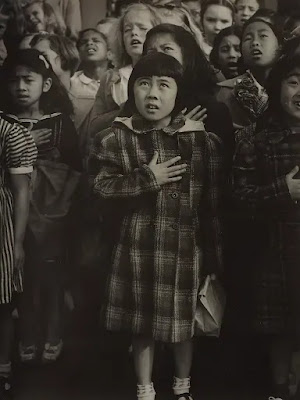VISUAL CULTURE ART 218
Laura Mongiovi, Professor, Flagler College, St. Augustine, Florida
Friday, September 13, 2024
Friday, August 26, 2022
The Work of Art in the Age of Digital Reproducibility
InVisible Culture: An Electronic Journal for Visual Culture
https://ivc.lib.rochester.edu/category/issues/current-issue/
Mission
InVisible Culture: An Electronic Journal for Visual Culture (IVC) is a student run interdisciplinary journal published online twice a year in an open access format. Through double blind peer reviewed articles, creative works, and reviews of books, films, and exhibitions, our issues explore changing themes in visual culture. Fostering a global and current dialogue across fields, IVC investigates the power and limits of vision.
Each issue includes peer-reviewed articles, as well as artworks, reviews, and special contributions. The Dialogues section offers timely commentary from an academic visual culture perspective and announcements from the editorial board.
History
In 1998 students in the Graduate Program in Visual and Cultural Studies at the University of Rochester founded IVC. The inaugural issue chronicled current research among faculty in the program. Following issues employed a guest editor system and topic-oriented issues. In 2012 we adopted a new editorial model wherein our editorial board collaboratively ideates and oversees issues. We have archived the original website here.
IVC is maintained with generous support from the Graduate Program in Visual and Cultural Studies.
Thursday, April 14, 2022
Visual Response to Parable of The Sower
Assignment:
- Collect images that visually communicate your perception of Parable of The Sower.
- Do:
- Select images that reflect your understanding of the narrative.
- Select images that reflect the emotions you experienced when reading the narrative.
- Select images that reflect how you imagine the narrative before or after the author's story.
- Select images that connect your personal experience with the narrative.
- Do not:
- Do not select images from the illustrators that depict images in the graphic novel.
- Do not select images of book covers.
- Do not include images of the author.
- Do not include images with text.
- Use images from the internet and/or images you take yourself.
- Include at least eight (8) images. No more than twelve (12).
- Place all images on one page.
- Maintain a thin border around each image (refer to examples below).
- Note: the examples below are not examples of this assignment.
- Carefully consider how the formal qualities of the images such as line, color, texture, shape, composition, scale visually communicate your perceptions.
- Perhaps you want one image to be a focal point. How will this be achieved? Place in center? Or have a grid with one image in color and the others in black and white. Or maybe you will have one image with different content from the rest.
- You can also utilize a theme. Perhaps all images are portraits of people. Or maybe all images contain the same dominant color.
- Assign a title to your visual response. Place title underneath image collection.
- In a separate document, list links to all images.
- Include your name in the document .
- Try to list links in order of images, but not necessary.
- Present your visual response to the class.
- Date announced in class.
- Email the two files to Prof. Vigliotti and Prof. Mongiovi.
- Please send email within 24 hours of presenting to class.
- Please send all files as word documents.
- Label file for image collection:
- LastName_VR_Images
- Label file for sources:
- LastName_VR_Sources
Tuesday, April 12, 2022
Dorothea Lange, Photojournalist, American, b. 1895 d. 1965
- Working as a photographer for Depression-era government to raise awareness of struggling farmers.
- Pea-pickers camp in California.
- Seven children.
- Frozen vegetables and birds killed by children.
- Photo published in the paper (San Francisco News)
- Tagline - "What does the New Deal Mean To This Mother and Her Children"
- Farmers driven west due to Great Depression and Dust Bowl.
- Great Depression, 1930's, economic decline.
- Dust Bowl, 1930's, Plains region, Agriculture.
- New Deal, President Franklin D. Roosevelt, 1930's, Financial Reform - Public Work Project and Regulations.













